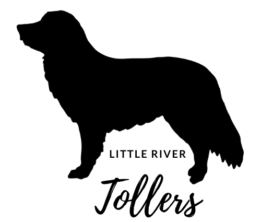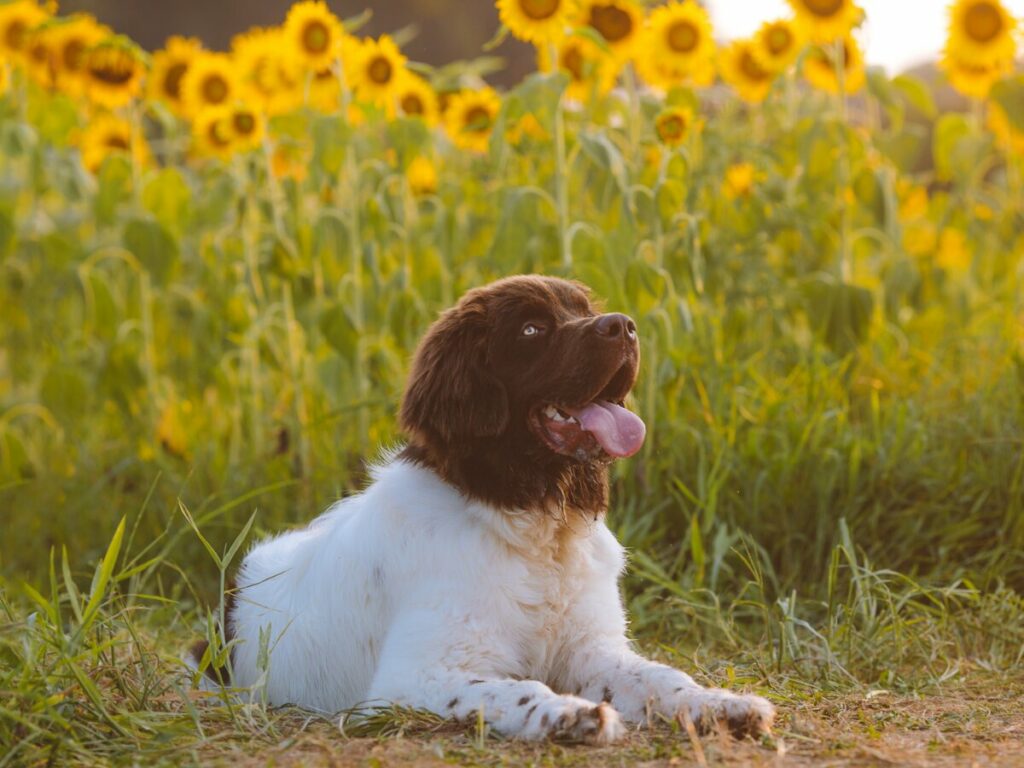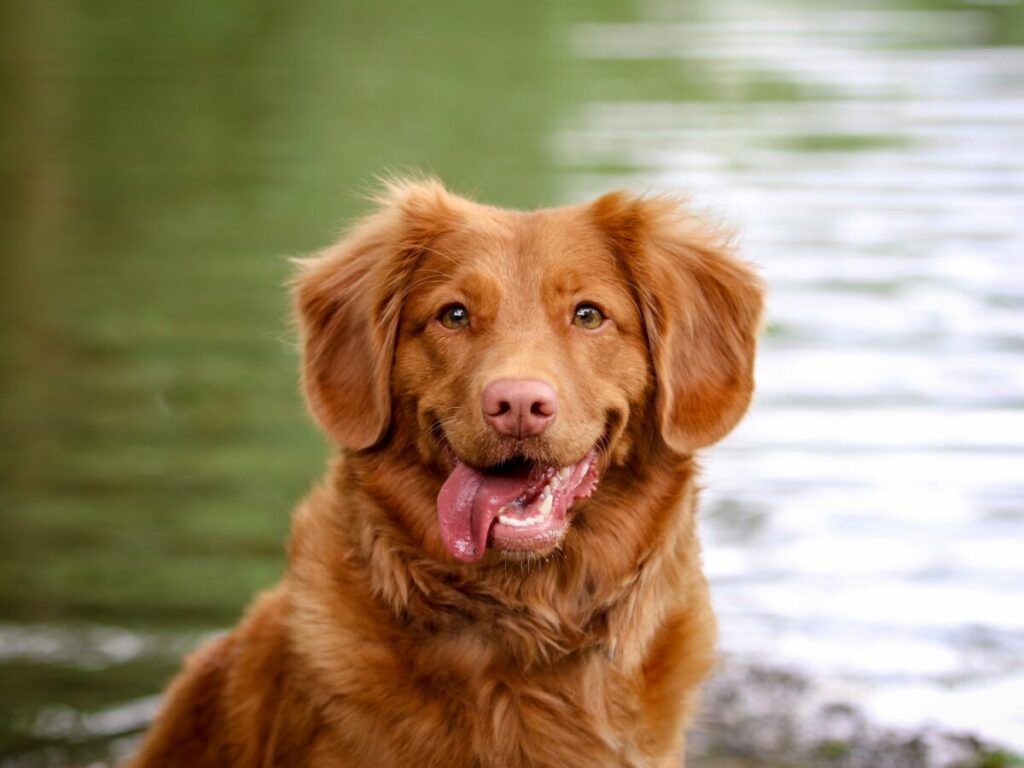We can’t truly appreciate Canadian dog breeds unless we acknowledge the Indigenous peoples who bred and lived with them for millennia. Dogs were used frequently by groups like the Tahltan First Nation in northeastern British Columbia. They were also owned by Thule Inuits who came into Canada from Alaska some 2,000 years ago. Only seven dog breeds are endemic to the region according to the Canadian Encyclopedia. Unfortunately, two of these breeds became extinct throughout the twentieth century. Regardless, all Canadian dog breeds share a love of the outdoors and the tenacity of canines who have endured long North American winters.
EXTINCT DOG BREEDS FROM CANADA
No matter how hard you look, finding two of Canada’s native dog breeds is difficult. Salish Woolly Dogs were the first to go extinct around 1900. The earliest evidence of them dates back 4,000 years. Tahltan Bear Dogs, the second, are thought to have been extinct since around 1980.
Salish Woolly Dogs
Salish Woolly Dogs were medium-sized with long white coats and curly-cue tails. They are comparable to American Eskimo Dogs or Japanese Spitzes. They were fed raw salmon to keep their coats healthy and lived in large packs of 12 to 30 dogs along Canada’s western coast. Coast Salish women used to shear their coats and would use it to make blankets.
Salish Woollys are thought to have lived alone on small islands near Vancouver Island and the San Juan Islands during the summer. They developed strong independent tendencies as a result of their time in this canine paradise, which is a trait shared by all Canadian dog breeds. Salish Woolly Dogs provided so much wool to the Coast Salish people that they were buried covered in a wool blanket when a pup died. In the 1800s, the Salish Woolly Dog population declined as European settlers evicted Indigenous peoples across Canada and elegant factory made blankets from England became popular.
Tahltan Bear Dog
The history of the Tahltan Bear Dog is a little different. Tahltan, These dogs were essential in the Kaska, Tagish, Tlingit, and Sekani people’s hunts. Despite being only around the size of Fox Terriers, they would kill bears in packs. Several Tahltan Bear Dogs would pursue a bear from behind while one distracted it. This worked especially well in heavy snow, as the bear struggled to move while the dogs ran around freely. It’s unclear what caused their extinction, but it could be linked to a canine distemper outbreak in the 1940s. Also the employment of weapons rather than dogs during hunts. According to the Canadian Kennel Club, there were only six Tahltan Bear Dogs left in 1975, and the last one died in 1979.
HOW TO HAVE HAPPY CANADIAN DOG BREEDS
Giving your Canadian dog plenty of time outside in broad open spaces is the best thing you can do for it. These dogs have spent hundreds (and often thousands) of years acclimating to life in the wild. Labrador retrievers may be the poster dogs for American suburbs these days, but that doesn’t mean they’re satisfied to spend their days on the couch. Make sure you can provide your dog with this type of lifestyle before going on a trip with a Canadian dog breed.
CANADIAN INUIT DOG
The Thule society of Inuit people in northern Canada and their Inuit Dogs were thriving 2,000 years ago. The pups guarded their families, looked for food to share, and pulled sleds to get everyone around. There could be as little as 279 Canadian Inuit Dogs left today. These dogs are extremely energetic and hardworking, yet their power and pack mentality make them unsuitable for children. If allowed enough room to run and play, they can develop into kind, devoted companions.
LABRADOR RETRIEVER
Labrador retrievers are the most common dog breed in America today. Because of their gregarious nature and high intelligence, they make excellent family pets. Many Labs are trained to be great therapy dogs as well as being sociable smarty pants. Prepare for an active breed that requires plenty of playing, exercise, and engagement with their family. They began their careers as water dogs in Newfoundland (rather than Labrador), assisting hunters in retrieving birds and waterfowl.
LANDSEER
Some claim that Landseers are simply black and white Newfoundlands, while others argue that they are their own breed. The truth could be somewhere in the middle. Landseers were created by crossing black and white Newfies with european breeds like Pyrennean Shepherds when Europeans arrived in Canada in the 1800s. Their calm demeanour and proclivity for defending their family members at all times make them excellent pets. You just need to give them room to wander.
NEWFOUNDLAND
Newfoundlanders were there to save Canadian fisherman from the freezing waters. These large dogs have semi-webbed paws and are strong swimmers. They were vital to Canada’s fishing industry, whether it was saving drowning seamen or hauling the day’s catch off vessels. They have since become faithful and lovely family companions. Early socialisation and training ensures that huge Newfies retain their amiable demeanour while also teaching them how to manage their big proportions.
NOVA SCOTIA DUCK TOLLING RETRIEVER
Nova Scotia Duck Tolling Retrievers are among the most costly dog breeds to own, owing to their rarity in the United States. They were, nevertheless, plentiful in the 19th century in Canada’s Nova Scotia province; they would be employed there for bird hunting. These lively pups, often called Tollers, would imitate fox movements to scare ducks into the air. They’re known for their vivacious personalities and make terrific family companions.
SALISH WOOLLY DOG
All of the details we have about Salish Woolly Dogs are assumptions since they are extinct and there are few records of them. What we do know is that Coastal Salish women sheared Salish Woollys a few times a year to make blankets. Hakai Magazine draws a picture for us of these pups enjoying exploring their island homes before resting peacefully while their coats were clipped, even keeping the women company while weaving. We assume these pups could survive well into their late teens with this kind of lifestyle. A diet of fresh salmon would definitely helped.
TAHLTAN BEAR DOG
We’re also making another educated guess about another extinct breed. We can imagine their energy levels were high based on the facts we have about Tahltan Bear Dogs and their fearless hunting strategies. We do know that they were little dogs who lived and worked in Canada for thousands of years with the Tahltan people and other indigenous communities. After the bravery required to face bears, loyalty and affection must be their top qualities.


